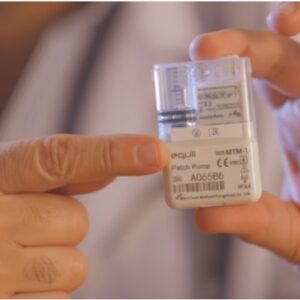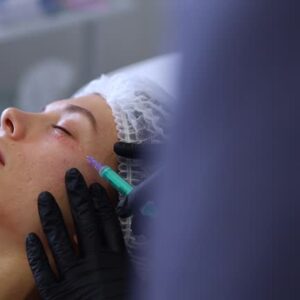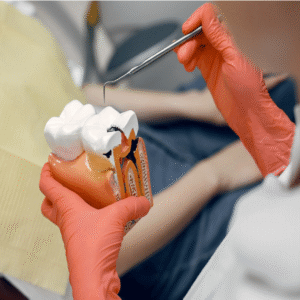Among the various types of hair loss, thinning or balding at the crown area is a common concern for many individuals. For those residing in the UAE capital, Crown Hair Transplant Abu Dhabi has emerged as a popular and effective solution to restore hair in this specific region. But is crown hair transplant the right choice for you? In this article, we will explore what crown hair transplant entails, who it benefits the most, and how to determine if it is the ideal option for your hair restoration needs.
Understanding Crown Hair Loss
The crown, located at the back top part of the scalp, is a typical area where hair thinning or balding occurs. Hair loss in this area can result from several causes such as genetic predisposition, hormonal changes, aging, or other factors. When hair loss progresses in the crown region, it may present as a noticeable bald spot or thinning patch, which often causes distress for those affected.
Unlike other areas of hair loss, the crown can be more challenging to conceal because it is highly visible from multiple angles. This makes hair restoration in the crown particularly significant for those looking to regain a natural appearance.
What is Crown Hair Transplant?
The transplanted follicles then begin to grow new hair over time, providing a fuller and denser appearance.
The technique used in crown hair transplant can vary, but the most common methods include Follicular Unit Extraction (FUE) and Follicular Unit Transplantation (FUT). Both techniques focus on preserving the integrity of hair follicles to achieve natural-looking results.
Who is an Ideal Candidate for Crown Hair Transplant?
Determining whether crown hair transplant is right for you depends on several factors. Ideal candidates generally include individuals experiencing noticeable hair thinning or balding in the crown region who have sufficient donor hair to be transplanted. The overall health of the scalp and hair density in donor areas play a crucial role in the success of the procedure.
Individuals with stable hair loss are better candidates, as ongoing active hair loss might affect the long-term outcomes of the transplant. It is important to have realistic expectations about what the procedure can achieve and understand that results may take several months to become fully visible.
Benefits of Crown Hair Transplant
Choosing a crown hair transplant offers numerous advantages.Since the procedure uses the patient’s own hair, the results look natural and blend seamlessly with existing hair.
Another benefit is the permanence of the transplant. Unlike temporary hair loss treatments or topical solutions, hair transplanted to the crown is generally resistant to the factors causing hair loss, meaning the results are long-lasting.
How to Prepare for a Crown Hair Transplant
Maintaining a healthy scalp and hair prior to the procedure is essential. It is also important to avoid certain medications or substances that could affect blood clotting or healing.
Patients are often advised to discuss their medical history and any underlying conditions that might influence surgery. A thorough assessment by a specialist can help tailor the procedure to individual needs, ensuring the optimal density and placement of transplanted hair.
What to Expect During the Procedure
During a crown hair transplant, the surgeon carefully extracts hair follicles from the donor area, typically under local anesthesia. These follicles are then meticulously implanted into the thinning crown area. The procedure usually takes several hours, depending on the extent of hair loss and the number of grafts needed.
Most patients experience minimal discomfort during the surgery and can return home the same day. The transplanted follicles enter a resting phase before new hair growth begins, which usually appears within a few months.
Recovery and Post-Procedure Care
Recovery from a crown hair transplant is generally straightforward. Patients may notice some redness or swelling in the treated area, which usually subsides within days. Proper post-procedure care, including gentle hair washing and avoiding direct sun exposure, helps ensure healthy healing.
It is important to follow any care instructions provided to promote successful follicle growth.
Is Crown Hair Transplant Suitable for Women?
While crown hair transplant is commonly sought by men, it can also be an effective solution for women experiencing hair thinning in the crown area. Female pattern hair loss often involves diffuse thinning, including the crown, and transplant procedures can help restore volume and density.
Suitability for women depends on the availability of donor hair and the pattern of hair loss. A detailed consultation can help determine if crown hair transplant is the best option or if alternative treatments may be more appropriate.
Alternatives to Crown Hair Transplant
For those who may not be ideal candidates or prefer non-surgical options, alternative treatments for crown hair loss exist. These include topical treatments, low-level laser therapy, and platelet-rich plasma (PRP) therapy, which can stimulate hair growth and improve scalp health.
While these alternatives can be beneficial, they often require ongoing maintenance and may not provide the same dramatic or permanent results as a transplant.
Making an Informed Decision
Deciding on a crown hair transplant involves understanding your specific hair loss condition, the potential benefits of the procedure, and your personal goals. Consulting with a qualified hair restoration specialist can provide valuable insights into whether this treatment aligns with your needs.
Frequently Asked Questions (FAQs)
What makes crown hair loss different from other types of hair loss?
Crown hair loss typically appears as thinning or balding specifically at the back top part of the scalp. It is often more visible and harder to conceal than hair loss on the front hairline, which makes restoration efforts particularly important.
How long does it take to see results after a crown hair transplant?
New hair growth usually begins to appear within three to four months post-procedure, with more noticeable improvements after six to nine months. Full results can take up to a year as transplanted follicles grow naturally.
Can crown hair transplant prevent future hair loss?
While the transplant restores hair to the crown, it does not prevent ongoing hair loss in untreated areas. Maintenance treatments might be recommended to stabilize hair loss in other parts of the scalp.
Is the crown hair transplant procedure painful?
The procedure is performed under local anesthesia, so pain is generally minimal. Some discomfort or mild soreness may occur after surgery but typically resolves quickly.
How long is the recovery period after a crown hair transplant?
Most patients return to normal activities within a few days. Healing of the scalp takes a couple of weeks, during which patients should follow care instructions to support optimal results.
Are the transplanted hairs permanent?
Yes, transplanted hairs are usually permanent because they are taken from areas resistant to hair loss. This makes the procedure a long-lasting solution for crown hair thinning.
Can women undergo crown hair transplant?
Women can be suitable candidates if they have sufficient donor hair and localized thinning in the crown area. A specialist consultation is necessary to determine the best approach.
What should I consider before opting for a crown hair transplant?
Consider your hair loss pattern, overall health, donor hair availability, and your goals. Understanding the procedure and having realistic expectations are crucial for satisfaction.





